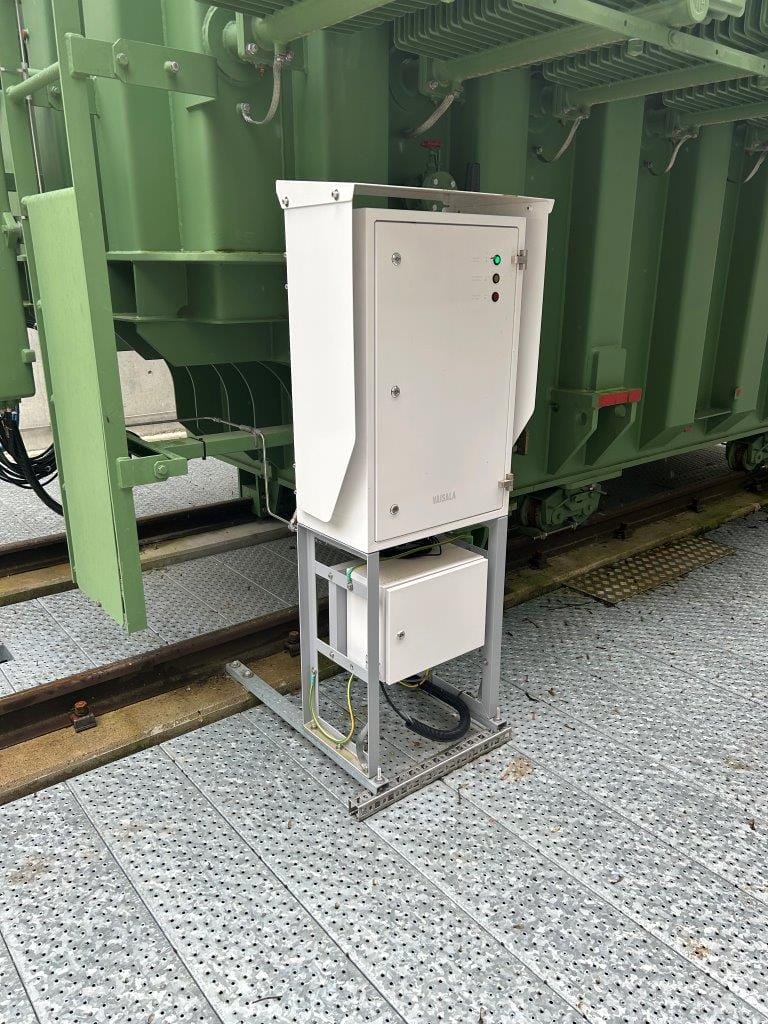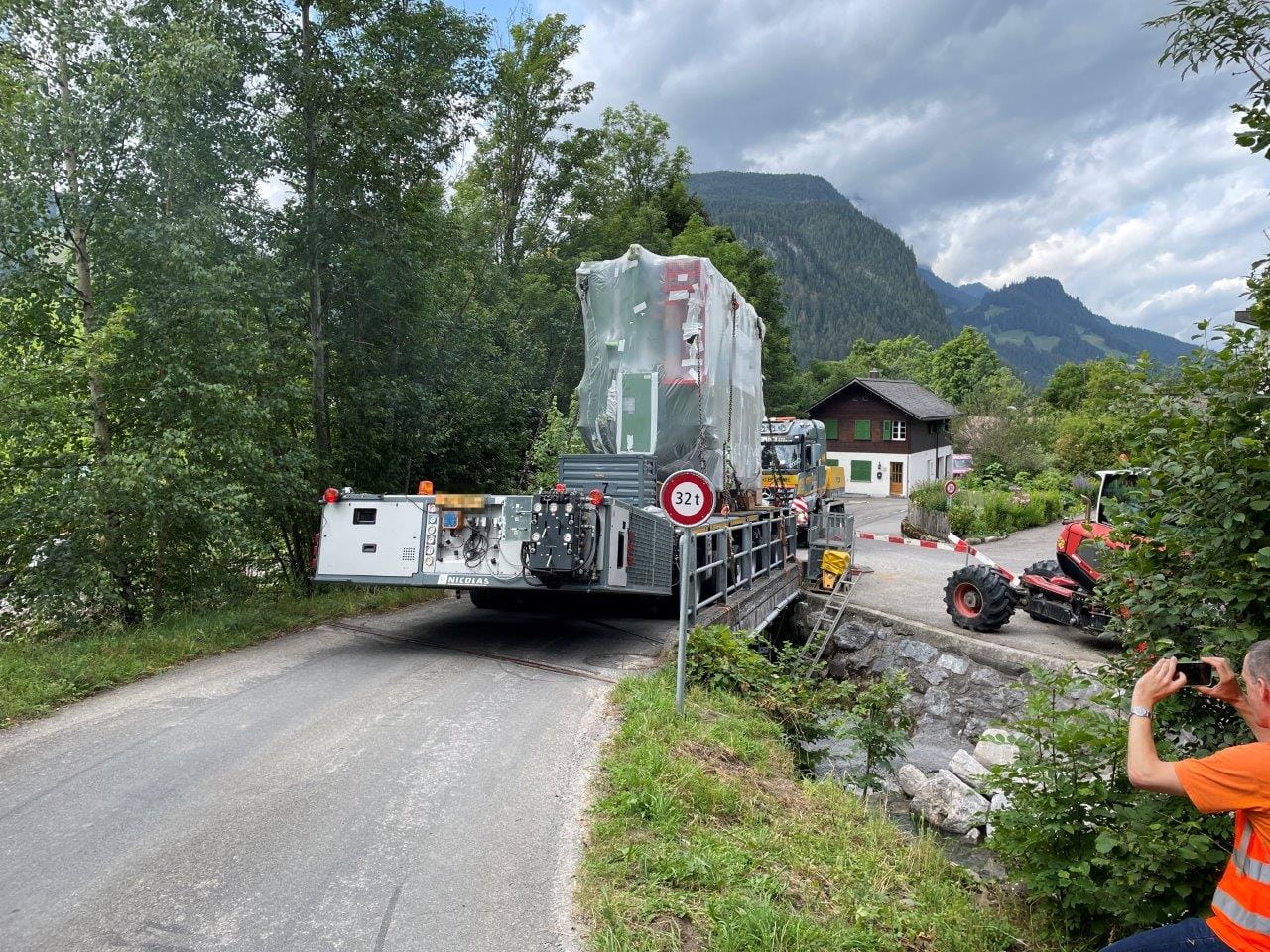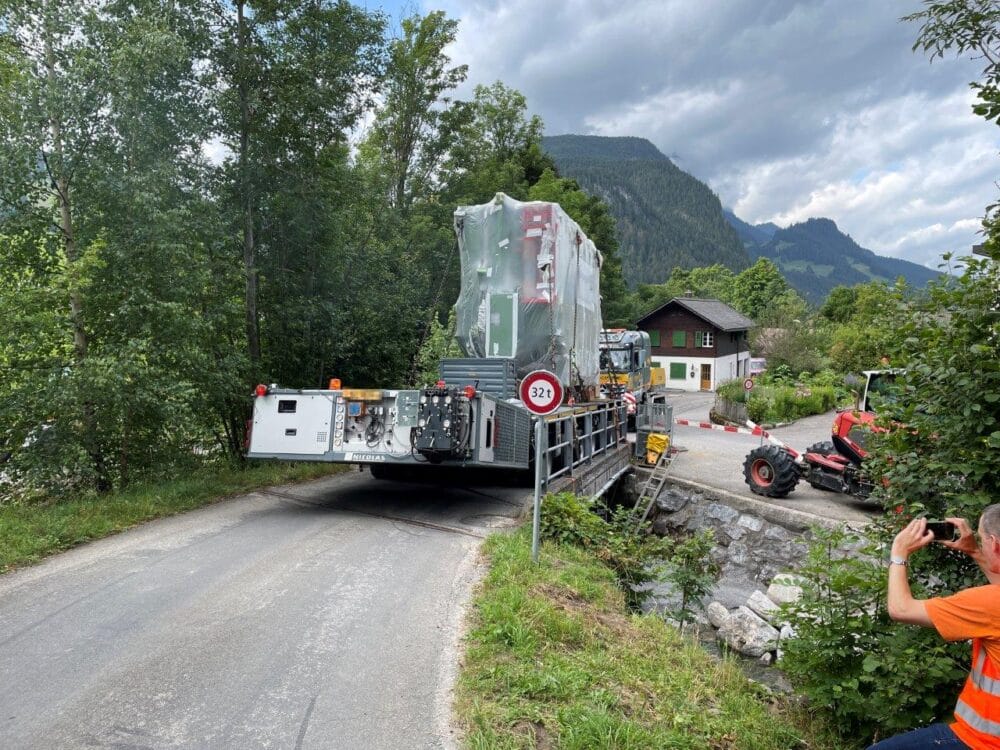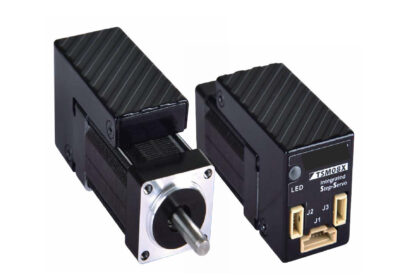The installation of a heavy transformer at an alpine location presented the Swiss company BKW with a number of unusual transport issues. Having overcome these challenges, BKW engineers detected small, but rapidly declining discharges after the transformer had been installed. Under normal circumstances they might have considered returning the transformer to the factory, but given the complexity and cost of doing so, a Vaisala OPT100 Optimus™ DGA instrument was fitted to monitor the transformer continuously.
“Our initial tests showed that the transformer was working well,” explains BKW primary engineer Lukas Eggimann. “However, the detection of discharges, no matter how small, represented a potential risk, so the online DGA monitor was fitted to ensure that alerts would be issued if any abnormalities developed within the transformer.”
Alpine transformer challenges
In response to increasing demand, and to increase the security and resilience of the power supply in the Gstaad region of Switzerland, an additional 75 MVA transformer 220 kV / 50 kV was required. However, the installation site was located high in the Alps with challenging access issues. For example, it would be necessary to climb steep roads and to cross bridges that are not designed for such heavy loads.
Two attached trailers were necessary to carry the transformer, along with a self-propelled vehicle, resulting in a total payload of 123 tonnes, which exceeded the capacity of some bridges. For example, it was not possible to avoid a narrow bridge with a 32-tonne limit, so substantial reinforcement had to be implemented prior to the transformer’s arrival (see photo).

Ensuring transformer reliability
Following installation, BKW’s transformers are thoroughly inspected by the company’s in-house diagnostic team, as well as the Technical Commission for High Voltage Issues (FKH). Partial discharges were detected during these assessments, although a strongly decreasing trend was observed over 4 to 5 hours. “There are a number of potential causes of these discharges,” Lukas explains. “For example, tiny fragments of metal could be present as a result of welding activity during manufacture of the compartment, or the discharges might be caused by other factors such as voids, bubbles or moisture. Whatever the reason, the concern is that they might later develop into serious problems resulting in transformer failure.”
The transformer had tested perfectly in the factory, the discharges were reducing rapidly during onsite measurement, and the costs and complexity of returning the transformer to the factory were prohibitive, so, in order to avoid any potential risk, the Vaisala DGA monitor was installed.

Why monitor continuously?
The traditional method for checking the performance status of transformers is to manually collect oil samples once per year for laboratory analysis. This spot sampling method provides an indication of dissolved gases and oil quality at one moment in time. In contrast, continuous DGA monitors are able to detect problems instantaneously – before they become serious. Continuous monitors are also able to reveal trends so that users can correlate gas levels with transformer load, for example.
The Vaisala OPT100 Optimus™ DGA can be installed in less than two hours and with autocalibration and IR reference measurement, the instrument is able to deliver reliable gas trending data. Vacuum gas extraction eliminates fluctuation caused by oil temperature or pressure, and hermetically sealed optics prevent sensor contamination. Moisture and hydrogen are measured directly in the oil with a capacitive thin-film polymer HUMICAP® sensor and solid-state sensors. Importantly, the OPT100 measures the total dissolved gas pressure of the oil and detects any air leaks in sealed transformers without the requirement to monitor oxygen – which can be a misleading measurement.

“The OPT100 is a risk reduction tool,” explains Vaisala’s Andreas Hilgers. “In Gstaad, BKW are using it to ensure that the very slight concerns revealed by the post-installation tests, are mitigated by reliable continuous monitoring. We have some customers that use Vaisala DGA monitors on all of their new transformers, and other users who only install them where, say, the transformer passes FAT tests, but not the site acceptance test.”
The OPT100 can be incorporated into power companies’ SCADA systems, but it is also able to provide secure standalone communications. Lukas says, “This is an important feature for cybersecurity because the addition of an instrument such as this should not provide an additional entry point for hackers.”
The ease of installation was also an attractive feature for Lukas. “Of course, it was good that we were able to install the OPT100 quickly and easily,” he explains. “But the typical lifespan of a transformer is 40 to 60 years, so it is equally important that the monitor can be removed easily at a later stage.”

Performance to-date
The OPT100 was initially installed in 2022, and since that time both the transformer and the DGA monitor have performed well with no sign of any abnormalities. Good correlation has been shown between the OPT100 measurements and the results from samples taken and tested by FKH, and there have been no indications of increased gas levels in the transformer oil.
Looking forward
The fleet of BKW transformers is in very good condition, and is monitored regularly by offline diagnostics and oil sampling for analysis. If transformers exhibit any abnormalities, the monitoring interval is shortened as a first step, and if concerns remain, the installation of an OPT100 would be considered. “Our risk reduction strategy is therefore to take action when any abnormalities are detected – much like human healthcare,” Lukas says. “Continuous DGA monitors therefore represent an essential tool in our risk management strategy, and the OPT100 has been shown to deliver the reliability and peace of mind that we need – especially when the access road has a 32-tonne limit!”






